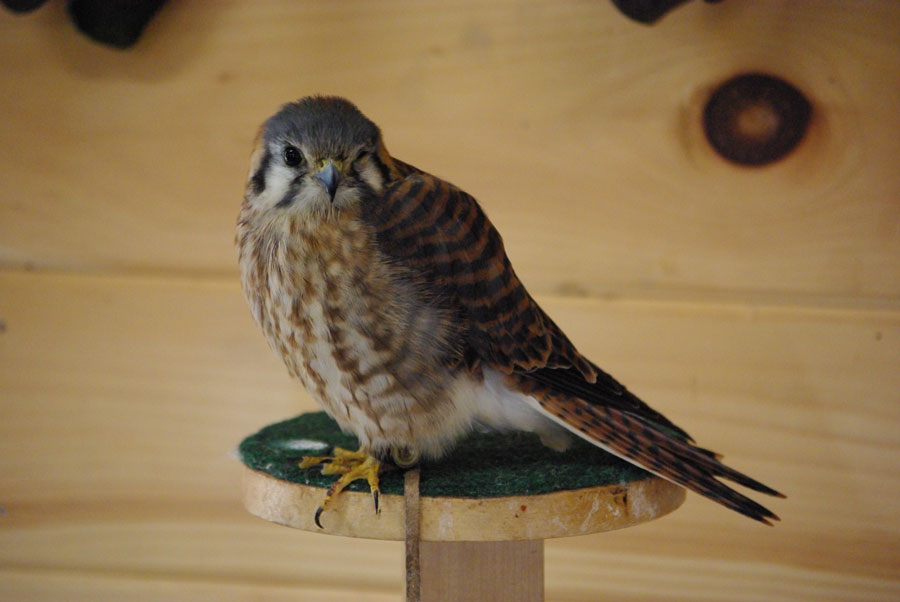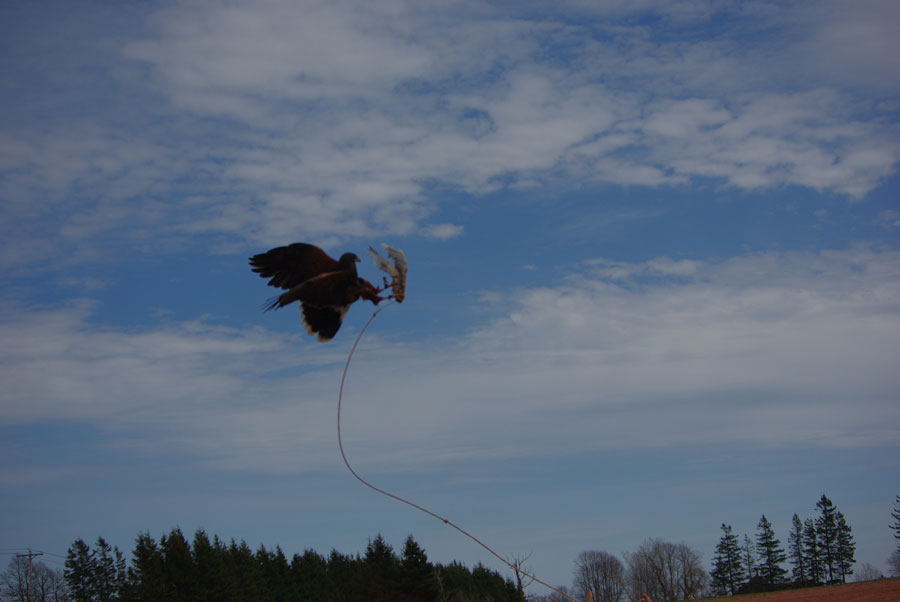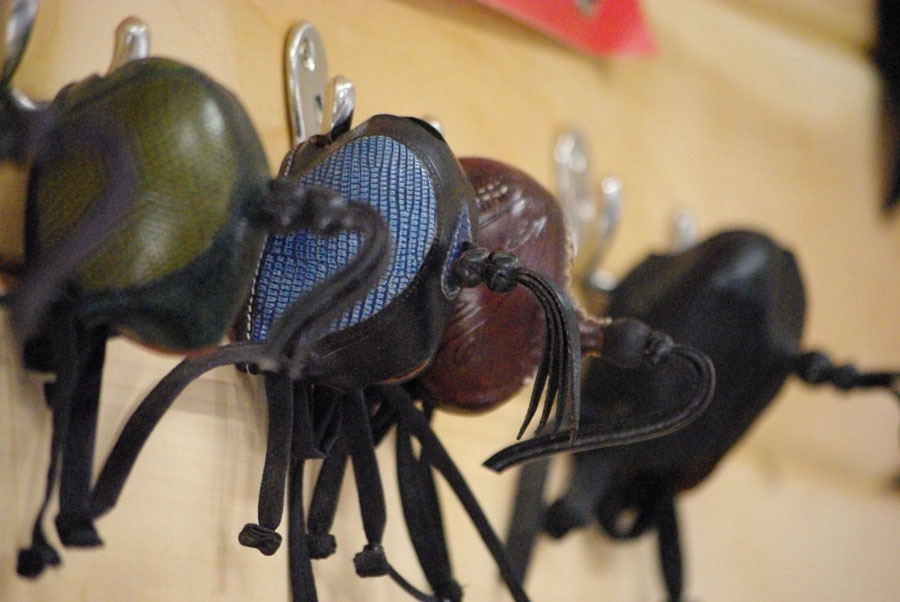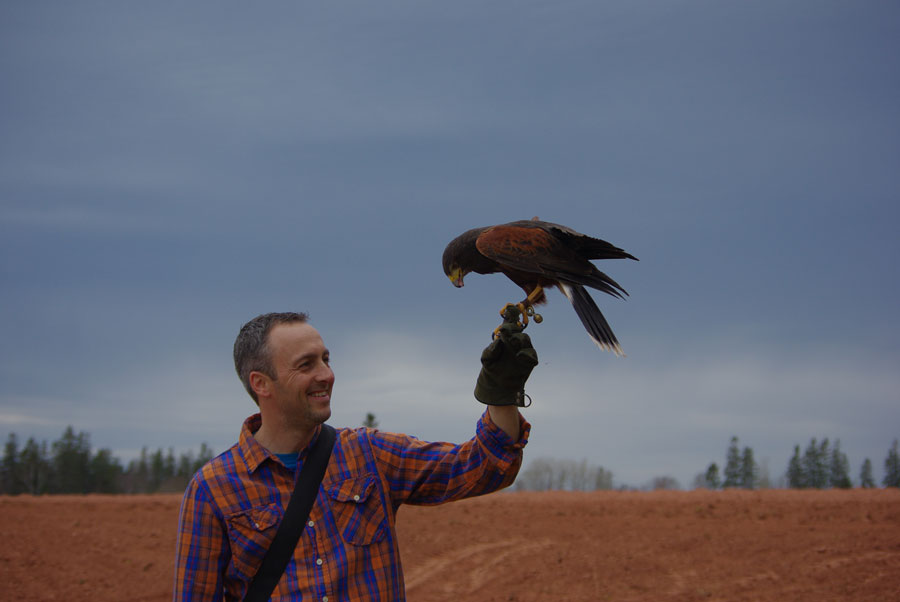Jamie Stride turns his fascination of falconry into a high flying business
Round Up, Prowl, Dual, Lorsban, and Orthene are familiar names in the pesticide world. But what about Sam the Saker, Hush, Hermes, Kensi, and Red? Ever heard of those before? You probably haven’t, but they are the names of Island Falconry Services’ birds and they are quite effective in the pest control realm. Using birds of prey as alternative pest control methods is still not a common practice on PEI but Jamie Stride, owner of Island Falconry Services has been building a business with his birds for the past eight years. “My background is pest control. So I witnessed a falconer way back, 10 plus years ago, and it was something that really caught my attention and that’s really where it started. I was fascinated with the sport of falconry. . . my background in pest control helped when it came to creating the business,” Stride said. “There was a need and want. I saw a market for the use of bird control with a more natural approach.”
Pest birds include seagulls, starlings, crows, pigeons, and others that can become invasive on a farm or in a food processing facility. “In many different ways, a bird can become a pest, food related. They’re gonna pick your profits, literally,” Stride explains, using the example of a flock of birds descending upon a vineyard, or a blueberry field to feast.
Using his trained falcons or hawks, Stride can bring them to a site and sometimes, with a simple cry from a hawk, the pest birds leave and won’t return. “It’s a scare deterrent and it’s a very effective method given that they are natural predators,” Stride said. “If you compare the effectiveness of using man-made items, mechanical items, scare devices to that of a live predator, it doesn’t compare.”

Kensi the Kestrel calmly eyes the camera Photo credit: Stephen Young
Stride has six different birds of prey in his arsenal: the American Kestrel, a PEI native species and the smallest and most common falcon in North America; two Harris Hawks, Hulk and Hush, that are native to the southern States and South America; an appropriately-named hawk, Red, who is a Red-Tailed Hawk which are found throughout North America; and finally a hybrid bird, Hermes, who is a mix of a Peregrine Falcon and a Gyrfalcon. Kensi the Kestrel is a delicate-looking bird, about the size of a small robin, but she packs a big punch when she’s on site to scare off pest birds like starlings.
“The challenge, I won’t say problem or issue, the challenge is, this is a labour-intensive service. Because a falconer with a bird of prey has to be on site for a regular time period in order to give effectiveness, and of course that costs money.” Each site has different requirements, and depending on the pest bird and why they are on site–for example, are they roosting there or enjoying a food crop—Stride may need to use his birds on a daily basis for a week or more to deter the pest birds from returning. Birds can have generational memory, especially when it comes to food sources, passing down the information to offspring about a food location, so this can create birds that are less easily deterred. Stride relates a story about seagulls that had a readily available food source and their offspring would experience their first food outside of the nest at that site. “And they produce young and do the same thing, and it’s just a cycle. It’s hard to break that cycle. We’ve broken the cycle, but it took many years to do so.”

Hush, a Harris Hawk catches a lure in mid-flight Photo credit: Cheryl Young/Salty
When Stride first opened his business in 2010, it was 100 percent pest bird control, but these days he has branched out into offering educational tours and encounters at his location in Albany. Tourists, school groups, Cadets, 4-H groups, and interested folks are treated to an experience quite unlike anything else offered on the Island. Beginning with an information session, Stride passionately teaches his guests about falcons and hawks and the history of falconry. Then it’s hands-on, literally. After fetching Sam the Saker from his perch, feeding him in front of the group, Stride offers the chance to have Sam sit on onlookers’ hands (safely enclosed in a thick leather glove!). While hooded, Sam is a calm bird and allows many the chance to see him up close and personally. Stride also does on-site visits at daycares, schools, and other educational facilities and is now doing over 400 presentations each year. His passion for informing people about these magnificent birds is evident.

Special hoods are used to keep the bird of prey calm during transit Photo credit: Cheryl Young/Salty
Stride also exhibits the power of these birds in action. Hush is released from his enclosure in The Raptors Lounge and the relationship between the falconer and the bird is displayed. Hush gained his name in his first year, when Stride recalls he was “extremely vocal”, constantly screaming in Stride’s ear, and prompting him to continually say, “Would you just hush!” Stride matter-of-factly states that no matter how long a falconer may have a bird, the bond between the two is quite simply based upon food. If the falconer has food to give the bird, the bird will return time and time again to the glove, but once the food is gone, there is no longer any interest on the bird’s part in the falconer.
Stride raised and trained Hush from a young bird of three months and now, six years later, he demonstrates that training. While Hush sits in the high branches of a nearby trees, Stride turns his back to the bird and tucks a small piece of raw meat into his glove. Turning back to the tree, he raises his glove and Hush immediately swoops in for his meal. A bird of prey’s eyesight is phenomenal, and Hush can easily tell whether there is food in the glove or not, and he will ignore an empty glove if it is offered. When a piece of meat is tossed into the air and the hawk snatches it before it can hit the ground, you quickly recognize why pest birds can easily be intimidated and scared away from a field, barn, or food production facility.
Although his business has evolved from strictly pest control to a 50-50 mix of bird control and educational experiences, Stride still loves pest bird control. “I love the challenge in the CSI-type work involved. The behavioural patterns, the relationships between predator and prey, and understanding, dissecting it, figuring out what works and what doesn’t work. It’s a real challenge and I love it. You arrive on site and you’re looking for things to figure out where to start, where do I start, where’s the why?”
- WTF - December 2, 2020
- WHAT GOES AROUND COMES AROUND - June 12, 2020
- Salty’s 2020 Gift Guide - December 2, 2020
- A RETURN OF DELIVERY - May 6, 2020
- ICYMI - April 22, 2020
- NEW BIOMASS BOILERS FOR LOCAL GREENHOUSE - March 31, 2020
- TOP CHEF CANADA COMPETITOR FROM PEI - March 4, 2020
- FOOD INSECURE - March 1, 2020
- ACCESS TO FRESH PRODUCE - March 1, 2020
- POLITICS OF SCHOOL FOOD - March 1, 2020


